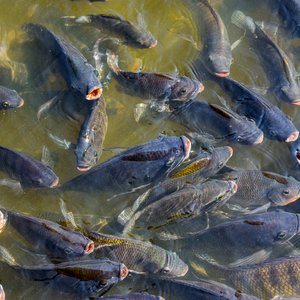Commercial aquaculture and economic growth, poverty alleviation and food security
A recent FAO Fisheries and Technical Paper, Commercial aquaculture and economic growth, poverty alleviation and food security - Assessment framework, proposes methods for quantifying the contribution of aquaculture to national economies, poverty alleviation and food security in order to improve the much-needed political and financial support to the sector for its adequate development. Ways to measure the three dimensions of food security - availability, access, contribution to food utilization - are described and explained.
by
Nathanael Hishamunda
Fishery Planning Officer, Fisheries and Aquaculture Economics and Policy Division
FAO Fisheries and Aquaculture Department
Junning Cai
Assistant Professor, Chinese Academy of Finance and Development
Central University of Finance and Economics
Beijing, China
and
PingSun Leung
Professor, College of Tropical Agriculture and Human Resources
University of Hawaii, Manoa
Honolulu, Hawaii, United States of America
ABSTRACT
This paper proposes some methods for quantifying the contribution of aquaculture to national economies, poverty alleviation and food security so as to improve the much needed political and financial support to the sector for its adequate development. Aquaculture’s contribution to a country’s economy can be measured by “aquaculture value-added multiplier”, an indicator that represents the “increase in gross domestic product corresponding to a one-unit increase in aquaculture value-added. As alleviating poverty occurs by creating well paying jobs, evaluation of the contribution of aquaculture to poverty alleviation can be done through “aquaculture employment multiplier”, the increase in the total employment for the entire economy corresponding to one extra job created in aquaculture.
The contribution to food availability, one of the three dimensions of food security, can be assessed through the “net sum of protein-equivalent” (direct contribution) and the “ratio between the aquaculture net foreign exchange earning and the total value of food imports” (indirect contribution). “Aquaculture labour-income and employment multipliers” can be used to quantify aquaculture’s contribution to food access, the second dimension of food security. Aquaculture tax multiplier and the “aquaculture ratio between the net foreign exchange earning” and the “whole economy net foreign exchange earning” can be used to estimate the sector’s contribution to food utilization, the third dimension of food security.







